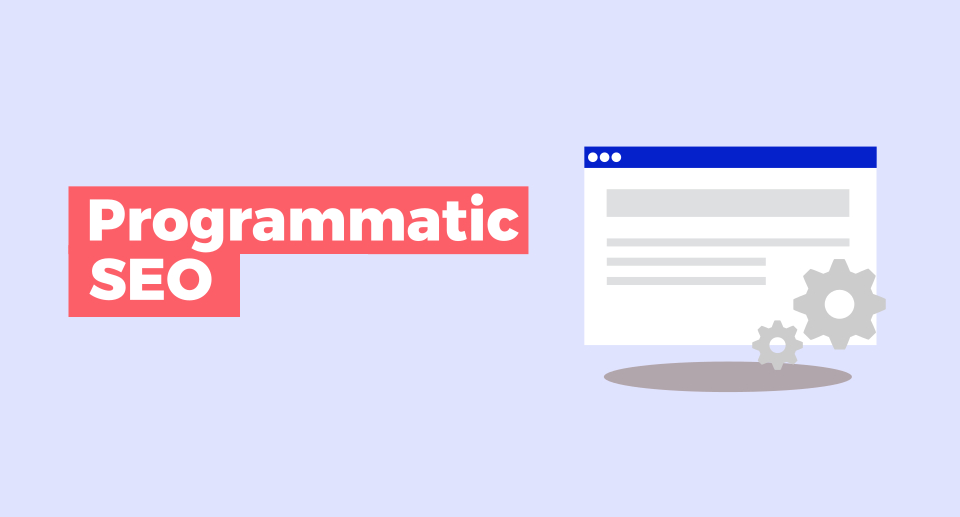Programmatic SEO Guide

In today’s digital world, scaling traffic requires more than traditional SEO. This Programmatic SEO Guide reveals how to automate thousands of optimized pages for growth. Whether in travel, e-commerce, or SaaS, mastering this approach is crucial. Explore strategies, tools, and real-world examples to drive results fast. Plus, discover the best digital marketing agency in dubai to help you implement and succeed with programmatic SEO.
What is Programmatic SEO?
To know SEO meaning in business, you need to know programmatic SEO is the process of using code and automation to generate and optimize a large volume of web pages based on a data set. Instead of manually creating individual content pieces, programmatic SEO leverages templates and dynamic inputs to populate content across hundreds or thousands of pages. The objective is to rank for long-tail keywords at scale and capture traffic that may otherwise be missed through traditional SEO practices.
In this programmatic SEO guide, we explain how this method allows you to dominate niche queries and scale content creation using tools, scripts, and structured data. It’s often used by directory sites, marketplaces, and SaaS companies. The key lies in combining content automation with strategic keyword research and schema markup to create high-performing landing pages.
Why Invest in Programmatic SEO?
Let’s dig deep into the benefits of seo. Investing in programmatic SEO can offer exponential growth for your organic traffic. With the right programmatic SEO guide, you can build scalable digital frameworks that target specific search intents. Instead of targeting 100 keywords manually, you can build out 10,000 pages that each rank for unique long-tail terms.
Here are some reasons to consider this approach:
- Scalability: Generate thousands of pages quickly.
- Efficiency: Save time and resources through automation.
- Long-tail Traffic: Attract traffic that competitors might ignore.
- Better ROI: Rank with less effort compared to traditional methods.
When paired with the right programmatic SEO tools and strategies, the growth potential is immense.
Also read: seo and sem in digital marketing
Programmatic SEO vs. Traditional SEO
Traditional SEO focuses on manual content creation, in-depth research, and page-by-page optimization. While effective, it limits scalability. Programmatic SEO, on the other hand, automates content generation using templates and structured data sources.
In this programmatic SEO guide, you’ll see how traditional SEO may be ideal for cornerstone content, but programmatic SEO dominates when scaling landing pages like location-based services, product listings, or keyword-targeted blog posts.
The difference lies in speed, efficiency, and scale. While both approaches complement each other, programmatic SEO is essential for businesses that want to expand reach significantly and drive growth through automation.
How Does Programmatic SEO Work?
Programmatic SEO works by combining structured data, automated templates, and scalable content strategies to generate thousands of SEO-optimized pages. Below is a step-by-step breakdown of how to execute this process effectively.
Step 1: Identify a Scalable Opportunity
The first step in this programmatic SEO guide is to identify a niche or keyword group that can be scaled. For example, a travel website could target “hotels in [city name]” or “things to do in [destination].” These types of queries are predictable and can be templated.
Using keyword research tools and competitive analysis, find patterns where similar searches occur at volume. Focus on opportunities where intent is transactional or informational, and where minimal competition exists for long-tail variants.
Step 2: Collect and Structure Your Data
Data is the foundation of programmatic SEO. You’ll need structured datasets, either public or internal. This could include product specs, city names, services offered, or user-generated content.
Organize your data in spreadsheets or databases like Airtable or Notion. Make sure each row includes the core variables you’ll inject into your page templates. Clean, accurate data is essential to ensure high-quality output and avoid content duplication.
Step 3: Build SEO-Friendly Templates
Next in the programmatic SEO guide is the creation of templates. These are HTML pages designed with placeholders for data variables like [product name], [location], or [review count].
Ensure each template includes SEO best practices: unique meta tags, headers, internal links, and schema markup. Templates should be adaptable enough to reflect different tones and keyword clusters while remaining technically sound for crawling and indexing.
Step 4: Automate Page Generation
Now that your templates and data are ready, use programmatic SEO tools or custom scripts to generate pages. Tools like Webflow, WordPress plugins, or headless CMS platforms like Sanity can help you automate this process.
Each page will dynamically populate the template with data from your dataset. Automate everything from metadata to internal links and H1 tags. At scale, this could mean 1000+ pages going live in a matter of minutes.
Step 5: Monitor, Optimize, and Scale
Publishing is just the start. Monitor the performance of your programmatic pages using Google Search Console and analytics platforms. Look at impressions, CTRs, and bounce rates to identify what’s working.
Refine your templates, update your datasets, and continue to scale. This programmatic SEO guide emphasizes iteration as the secret to long-term success.
Also read: b2b seo strategy
5 Key Things to Know Before Starting
Before launching your first programmatic SEO guide campaign, consider these five foundational points. We will also guide you in how to know good keyword search volume.
1. Data Quality Matters
Poor data leads to poor user experience. Ensure your datasets are accurate, well-structured, and complete. Missing or duplicate values can result in broken pages or thin content, harming your SEO performance.
2. Avoid Duplicate Content
Even with automation, each page should be unique. Use synonyms, randomization, and varied phrasing in your templates. Leverage tools like GPT or NLP models to enrich your descriptions dynamically.
3. Indexing Strategy Is Crucial
Not every page should be indexed. Use robots.txt, canonical tags, and sitemap strategies to control crawl budgets and ensure search engines prioritize your most valuable pages.
4. User Experience Can’t Be Ignored
Design your pages with users in mind. Fast loading speeds, responsive design, and easy navigation are essential. Programmatic SEO doesn’t mean ignoring UX.
5. Monitor and Adapt
Google updates can impact how your programmatic pages perform. Use tools like Screaming Frog, Ahrefs, or Semrush to track rankings, crawl health, and traffic fluctuations.
Programmatic SEO Strategies to Consider
This programmatic SEO guide recommends several scalable strategies:
- Local landing pages for service providers.
- Category or product variations for e-commerce.
- Data-driven blog content based on user queries.
- Long-tail keyword clustering.
Each strategy should align with your goals and user intent.
Also read: 11 Ways to Improve SEO on Your Site
Tools to Use for Programmatic SEO
Choosing the right programmatic SEO tools is key to your success. Here are some you should consider:
Airtable
Airtable lets you store, manage, and organize datasets with ease. Its spreadsheet-database hybrid structure makes it ideal for managing the variables needed in template creation.
You can integrate Airtable with platforms like Webflow or Zapier to automate the flow of data into your content generation system. The flexibility in tagging, filtering, and sorting data allows marketers to build large-scale SEO campaigns with precision.
Webflow
Webflow allows you to create CMS-based templates and connect them to structured data. It’s user-friendly and doesn’t require deep coding knowledge.
Use it to design responsive pages, populate them with data, and publish them en masse. Webflow’s CMS API also supports integrations with Airtable and Zapier, making it an efficient tool for programmatic SEO execution.
Google Sheets + Apps Script
Using Google Sheets along with Google Apps Script allows you to build a lightweight, code-driven solution. With custom scripts, you can automate the generation of title tags, meta descriptions, and even full page content.
This is ideal for smaller teams or MVP versions of your programmatic setup. With creativity, you can build a powerful system without relying on paid tools.
Screaming Frog
Screaming Frog is a vital tool for auditing your pages post-launch. Use it to check for broken links, missing tags, duplicate content, and crawlability.
For programmatic SEO tools, it’s a top choice for ensuring technical SEO compliance and maintaining performance as your site scales.
Semrush
Semrush helps monitor keyword rankings, traffic, and backlinks. It’s crucial for measuring the ROI of your programmatic strategy. It also useful for SEO Strategy For b2b Business. Use it to identify new keyword clusters to expand upon, or to refine existing content by understanding performance metrics. It integrates well with other tools to create a holistic SEO workflow.
How to Set Up and Execute Your Programmatic SEO
To implement this programmatic SEO guide, follow these structured steps:
Step 1: Conduct Keyword Research
Use Semrush or Ahrefs to uncover long-tail keyword groups. Focus on “best [X] in [location]” or “compare [A] vs [B]” formats. These are perfect for programmatic pages.
Step 2: Build a Clean Dataset
Once you’ve selected your keyword focus, create a dataset with consistent, clean values. This ensures that each template page will be functional and SEO-friendly.
Step 3: Design and Test Templates
Use Webflow or WordPress with dynamic tags to build responsive page templates. Test them manually before automating the entire set.
Step 4: Automate with Scripts or Tools
Use tools like Airtable + Zapier or Google Apps Script to generate your content. Ensure URLs, titles, and metadata are dynamically created and optimized.
Step 5: Publish and Monitor
Push your pages live and submit sitemaps to Google. Use Search Console to watch performance and tweak as needed.
Also read: benefits of ecommerce seo
Use of AI in Programmatic SEO
AI plays a growing role in programmatic SEO. Tools like GPT-4 or Jasper can help generate dynamic content for templated pages. From writing intros to crafting meta descriptions, AI fills in the gaps where raw data isn’t enough.
In this programmatic SEO guide, we emphasize the synergy between human input and AI assistance. Used correctly, AI enhances scalability without compromising quality.
Real-World Programmatic SEO Examples
Zapier
Zapier has thousands of pages targeting “how to connect [Tool A] with [Tool B]”. This data-driven approach dominates integration-based searches and brings massive traffic.
TripAdvisor
TripAdvisor uses programmatic SEO to create location-based pages for hotels, restaurants, and things to do. Each page follows a similar template, dynamically filled with user reviews and location data.
Canva
Canva ranks for a wide variety of templates like “resume template”, “invitation template”, etc. Each page targets a specific keyword variation using automated content structures.
These programmatic SEO examples show the power of scaling content intelligently.
Ready to Launch Your Programmatic SEO Strategy?
Ready to launch your programmatic SEO strategy? As a results-driven SEO agency in Dubai, Digializer helps you scale content, rank faster, and grow smarter. Whether you're targeting local markets or global audiences, we turn your data into traffic and measurable success. Let’s get started today.
FAQ
How to Do Programmatic SEO?
Start by identifying scalable keyword research guide opportunities, building structured data, creating dynamic templates, and using automation tools to generate and publish pages.
What Is Programmatic SEO With Practical Examples?
It involves using data to generate SEO-optimized pages. Practical programmatic SEO examples include Zapier’s integration pages or TripAdvisor’s location guides.
How Does Programmatic SEO Work?
It works by merging structured data into templates, automating page generation, and optimizing for long-tail keywords.
What is the Programmatic SEO Strategy?
The strategy focuses on creating thousands of long-tail keyword pages through automation while maintaining SEO quality.
What is the 80 20 Rule for SEO?
It means 80% of your traffic often comes from 20% of your content. Programmatic SEO helps scale the 20% that performs well.
Does Programmatic SEO Still Work?
Yes. When done correctly, it remains a powerful method for capturing underserved keyword segments at scale.
What is the 10X Rule in SEO?
It suggests creating content that is 10 times better than the current top-ranking page, in design, depth, and value.






